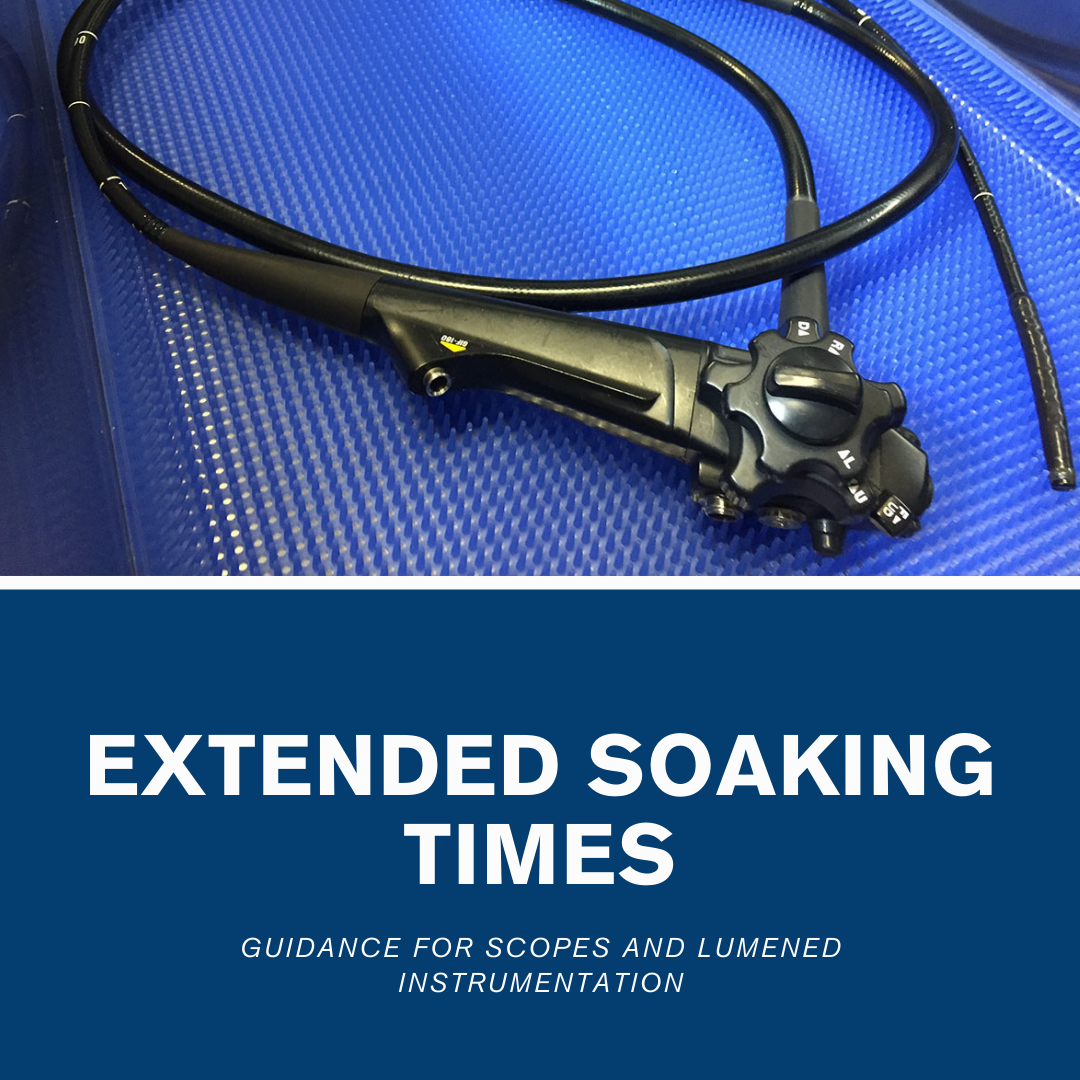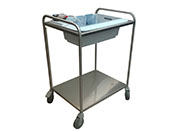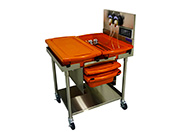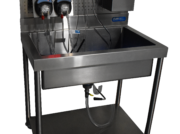
When to Use Extended Instrument Soaking During Manual Scope Reprocessing
 It’s impossible to ignore. Instrument reprocessing time has increased. A major factor? Extended instrument soaking.
It’s impossible to ignore. Instrument reprocessing time has increased. A major factor? Extended instrument soaking.
Reprocessing time will continue to increase due to additional instrument technology and safety measures. In fact, the current estimate is an average of 76 minutes for full reprocessing time by staff. But that’s when everything is performed as planned and no added steps are needed to clean properly.
The reality is recommended cleaning at the point of use does not always occur within a specific time frame in the procedure room. Missing the time frame pushes added work to reprocessing professionals and contributes to their backlog. The technicians and nurses must then take on the step of extended soaking to overcome repercussions associated with such a delay.
Pre-cleaning requirements for flexible and rigid scopes
Pre-cleaning must occur immediately after device use to prevent organic material from drying and hardening on instruments. Contaminants left behind on instruments can contribute to less effective high-level disinfection and sterilization procedures. Immediate cleaning practices within 60 minutes after use can prevent disease outbreaks and reduce infection risk.
Keeping track of time can be tricky. We all know manual records can be subject to human error. The Association for the Advancement of Medical Instrumentation (AAMI) recommends electronic record keeping over manual methods for accuracy to ensure cleaning is performed within the first 60 minutes. Even so, delays can occur.
Sometimes it’s more than human error that causes a cleaning delay. Emergency situations may contribute to endoscopes being left out overnight or even over a weekend. Leaving devices out for such time has been likened to a plate of sticky food left to harden that becomes more difficult to clean later. Then the instrument requires extra steps to remove bioburden and prevent infection risk.
Extended reprocessing soaking time
Most manufacturers recommend an endoscope be cleaned within 60 minutes of use to prevent biofilm formation and bioburden hardening. If less than 60 minutes passes between use and manual cleaning, then sterile processing technicians or GI nurses can follow standard leak testing and manual cleaning best practices to continue to remove contaminants.
Extended reprocessing soaking time is recommended if there is a cleaning delay of more than 60 minutes. It loosens hardened debris and bioburden from the instrument. If not performed, biofilms may form which can lead to infection control risk. While extended soaking times vary, they should not exceed 10 hours.1
It is still important to review IFUs for specific instrument cleaning despite common recommended steps for extended soaking. Not all IFUs will include extended soaking directives, however.
The right equipment can also make instrument extended soaking much easier and successful. Many sterile processing or endoscopy departments lack enough sink basins to accommodate extended soaking areas. Review your department’s existing inventory and make an assessment for added basins, transport carts with basins, or mobile soaking stations as needed based on volume of instruments coming through from the OR or procedure rooms.
Steps to include extended soaking look much the same:
Pre-cleaning
Pre-clean instruments as usual
Leak testing
Perform leak testing before extended soaking to prevent moisture damage
Extended (prolonged) soaking
Read IFUs and industry recommendations for extended soaking in detergent solution
Manual cleaning
Follow manual cleaning IFUs and best practices
It takes teamwork
Coordinating with the procedure team will help both departments better understand each other’s needs. If the OR or practicing nurses can complete point-of-care instrument cleaning, it reduces the backlog and enables departments to turn instruments around much faster. Not to mention properly pre-cleaning instruments helps to reduce infection risk in the long run.
It is inevitable for reprocessing professionals to reprocess instruments left out too long post-use. And when the time comes, you’ll want your team to be aware of how and when to use an extended soak while having access to enough basins to get the job done.
Pure Processing offers many solutions for sterile processing and endoscopy department extended soaking needs, including mobile carts with multiple basins and transport carts.
References
- Choi, et al (2015). Endoscope reprocessing: Update on controversial issues. Clinical Endoscopy, 2015 Sep; 48(5): 356–360.
Have a unique challenge you would like to get input on? We’d be happy to help!






